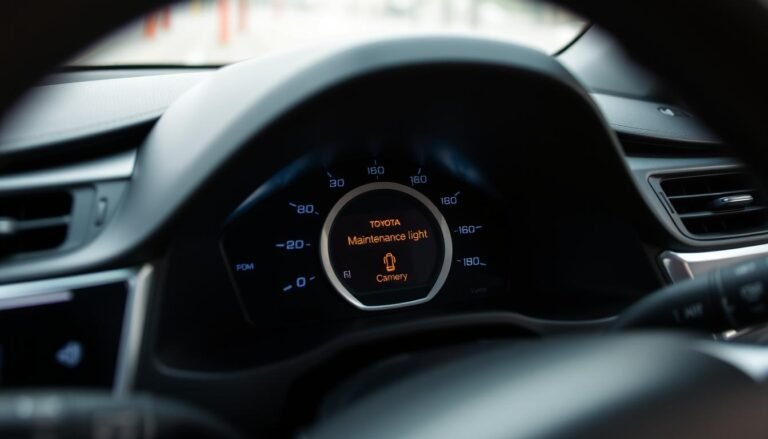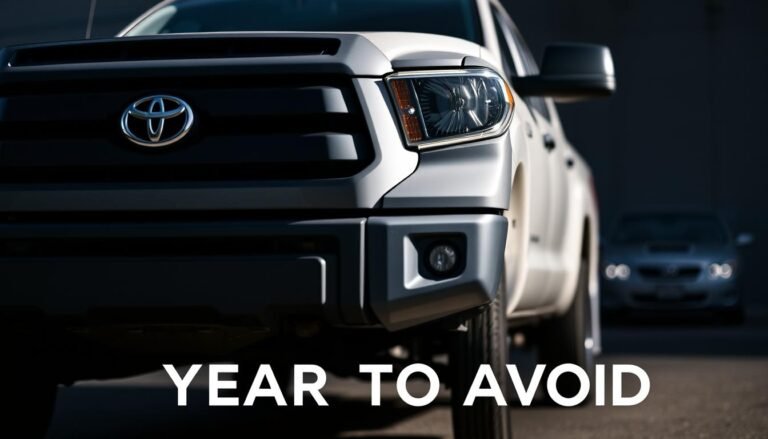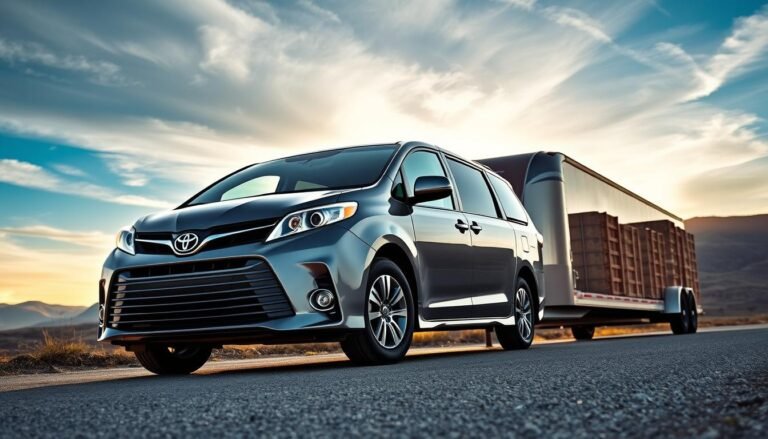What Is RCTA on Toyota? Safety Redefined
What is Toyota’s RCTA? It stands for Rear Cross Traffic Alert. It’s a cool safety feature that makes backing up safer.
Using sensors, it spots cars coming from the sides and alerts you. With RCTA, parking becomes less stressful and the chances of accidents drop.
Toyota’s RCTA tech does more than just alert you about traffic. It shows Toyota cares about keeping you safe.
It’s like having extra eyes when you reverse out of spots or driveways. It offers peace of mind and makes driving more fun.
Check out our guide to learn how it works and its importance in car safety.
Introduction To RCTA
Rear Cross Traffic Alert (RCTA) is a vital part of Toyota’s safety features. It makes driving safer and more enjoyable.
It helps drivers avoid crashes by watching for dangers behind the car when reversing. With RCTA, drivers feel more aware when parking or moving in tight spots.
This system shows Toyota’s focus on keeping people safe. It helps prevent accidents when cars are reversing.
What is RCTA Technology Toyota?
RCTA technology marks a big step forward in car safety. It uses advanced radar and cameras to help you see behind your car when backing up.
Knowing how RCTA operates and its main parts can make driving safer and more enjoyable.
How RCTA Works
When you put your car in reverse, the RCTA system starts. It checks the area behind your car for any moving traffic or obstacles. Sensors at the car’s rear spot vehicles coming from the sides.
If something is in the way, RCTA tells you with visual signs on the backup camera and a sound alert. This helps you stay aware and react quickly. RCTA makes reversing safer.
Key Components of RCTA
To really understand RCTA, it’s important to know its main parts. These include:
- Rear Sensors: They are placed at the back of the car to find obstacles and incoming traffic.
- Radar Technology: Measures how far and how fast other vehicles are moving.
- Camera System: Shows warnings on the backup camera to alert the driver of dangers.
- Warning Alerts: Sounds that let you know there’s something in the way.
What Is RCTA on Toyota
RCTA means Rear Cross Traffic Alert. It’s a key safety tool that guards you while you’re backing up. It spots cars coming from the sides that you can’t see.
This system warns you in time, helping to avoid accidents from behind. Knowing what RCTA is shows its importance in cars today.
Definition and Purpose
RCTA is a system that warns you of side-approaching vehicles when you reverse. It works with sensors to check behind your Toyota.
It then warns you about things or cars that might be in your way.
Comparison with Other Safety Features
Comparing vehicle safety tools shows how RCTA is different. It helps during reversing, unlike Blind Spot Monitoring which is for lane changes.
They each have their job in keeping the driver aware and safe. That makes them crucial for complete vehicle safety.
Significance of RCTA in Toyota Vehicles
The Rear Cross Traffic Alert (RCTA) system boosts driver awareness while backing up. It alerts drivers about vehicles coming from the sides, cutting the risk of accidents.
This is very helpful in crowded parking lots where it’s hard to see hazards.
Enhancing Driver Awareness
RCTA keeps an eye on the area around the car, helping drivers stay alert. It warns drivers about incoming traffic with sounds and lights.
This helps drivers decide what to do, especially in new places. It makes driving safer and boosts driver confidence, which is great for those new to driving.
Preventing Accidents during Reversing
Stopping accidents is key, and RCTA helps a lot with this. Its warnings help drivers avoid crashes when backing up.
It keeps drivers aware, reducing accident chances. Safety features like RCTA are becoming more important, helping drivers reverse safely.

Toyota RCTA System Overview
The Toyota RCTA system is a cutting-edge safety add-on for many models, showing Toyota’s commitment to toyota vehicles safety.
This feature supports drivers when they reverse, giving them an extra sense of their surroundings.
It uses rcta technology to spot cars coming from behind and warns drivers with sound, helping to dodge possible crashes.
This system is part of the Toyota Safety Sense package. It works with other safety tools like Pre-Collision Systems and Lane Departure Alerts.
Together, they provide a full safety shield for drivers, keeping them safe in different situations.
By improving rcta technology constantly, Toyota proves it’s leading in car safety. This brings drivers across the U.S. a lot of comfort and trust.
Models Featuring RCTA Toyota
Many Toyota models now come with RCTA technology, making driving safer. This feature warns you of cars coming from the sides when you back up.
This helps prevent accidents. Let’s look at models that have this life-saving technology.
Toyota Camry
The rcta toyota camry takes safety seriously with RCTA. It blends this technology into its list of safety tools, raising driver alertness.
Its stylish look and significant safety options attract many buyers.
Toyota Highlander
The rcta toyota highlander is great for families needing a safe, big car. It offers lots of room and a strong build, with RCTA for easier driving in tight spots and crowded places.
It’s designed with both family needs and safety front of mind.
Toyota RAV4
The rcta toyota rav4 uses this tech to better driving in all sorts of places. It’s known for being able to handle many different situations, with RCTA for extra safety.
This model is perfect for all sorts of adventures and city driving, keeping you confident at all times.

How RCTA Works with Other Safety Features?
Toyota vehicles use RCTA alongside other safety tech for comprehensive driver help. Knowing how RCTA works with other systems improves safety understanding.
This combination adds confidence, especially in complicated driving scenarios.
Integration with Toyota Safety Sense
The integration with Toyota Safety Sense marks a big step in car safety. RCTA focuses on rear cross-traffic dangers when reversing.
With Pre-Collision Warning and Lane Departure Alert, RCTA adds to the safety by watching for unseen threats from behind.
By using these technologies together, the car gives you strong protection. It makes backing up safer and easier.
Role of Toyota Blind Spot Monitoring
Blind spot monitoring works with RCTA for better safety. It alerts you of vehicles in your side lanes while driving.
RCTA signals when cross-traffic is nearby during reverse. Blind Spot Monitoring is active when you’re on the move.
They ensure you’re aware of your surroundings at all times. This helps you drive confidently, no matter the situation.
Benefits of Using RCTA in Your Toyota
Using RCTA in your Toyota makes driving safer and more enjoyable. It’s a key feature for vehicle owners today. This system watches your back, especially when you’re reversing or parking.
Peace of Mind For Drivers
Knowing that RCTA is on the lookout gives drivers peace of mind. It checks for cars behind you as you back up. This lets you concentrate on your driving, feeling more secure.
Improved Parking Safety
RCTA really steps up parking safety. It alerts you about cars coming your way, lowering collision chances.
Parking in tight spots becomes easier and less stressful. RCTA’s quick alerts make parking safer every time.

Real-World Applications of RCTA
Many drivers share their experiences with RCTA, showing how it helps them. They talk about the big changes RCTA makes in driving.
This part will show what people say about how RCTA makes driving safer and better.
User Experiences
Drivers feel safer with RCTA, especially when they back up. In busy places, they feel more sure because they know if a car is coming.
They get quick warnings and can make better choices, which makes backing up safer. People really like how RCTA helps them know more about what’s around them.
Impact on Driving Behavior
RCTA makes drivers change how they act. They pay more attention and are more careful when they back up.
They listen to RCTA’s alerts and have fewer accidents. These stories show that being more aware keeps people safe and makes them drive better.
Challenges and Limitations of RCTA
RCTA technology brings big benefits but also faces challenges. One major issue is sensor obstruction. Bad weather like heavy rain, snow, or fog can block sensors.
This means the system might not warn drivers correctly, leading to possible rcta limitations.
Another problem is the system’s dependence on being accurate. Sometimes, RCTA gives false alerts. This can confuse drivers who don’t understand the warnings.
These challenges rcta technology encounters stress the need to stay alert even when reversing. Trusting the system too much could make a driver miss seeing other dangers.
It’s important to know these safety feature concerns to use RCTA well. By understanding its limits, you can drive better and safer.
RCTA is a big step forward for keeping vehicles safe. But it’s best used alongside being watchful and careful on the road.

Future of RCTA Technology in Toyota
The world of car safety is changing fast, thanks to new RCTA tech. Toyota is leading the way with future RCTA technology.
It will greatly improve safety and make driving easier. New developments in sensor tech and combining RCTA with other driving aids will change how you drive.
Upcoming Innovations
Soon, RCTA tech will get even better at spotting things in its way. New sensors will spot obstacles quickly, making blind spots smaller.
This will be a big help when backing up and in tight parking spots. RCTA will also work with self-driving systems for safer, more efficient driving.
Trends in Automotive Safety Features
Now, cars are getting smarter with more automated and connected safety features. RCTA is starting to work with other systems like lane-keeping and adaptive cruise control.
This means cars can better understand what’s happening around them. As Toyota adopts these trends, drivers will feel more confident and there will be fewer accidents.
Conclusion
RCTA is a big step forward in making cars safer. It helps Toyota drivers avoid accidents while backing up.
This feature shows Toyota’s promise to keep its customers safe. It also shows how important it is to use technology that makes driving safer.
By knowing how RCTA works, drivers can use it to its full potential. This means safer parking and more peace of mind when driving.
RCTA is a key part of making roads safer for everyone. It shows how tech and safety can go hand in hand. Using RCTA means you’re serious about staying safe on the road.
As safety features like RCTA keep getting better, Toyota stays ahead in vehicle safety. This is good news for anyone who drives a Toyota.
FAQs
What does RCTA stand for in Toyota vehicles?
RCTA stands for Rear Cross Traffic Alert. It helps keep drivers safe by looking out for vehicles when backing up.
How does the RCTA system work?
The RCTA system uses radar and cameras to spot vehicles coming from the sides behind your Toyota. It gives visual and sound alerts when you go into reverse.
Is RCTA the same as Blind Spot Monitoring?
No, RCTA focuses on dangers when reversing. Blind Spot Monitoring helps with changing lanes by spotting vehicles in the next lanes.
Which Toyota models feature RCTA technology?
Several Toyota models have RCTA. This includes the Toyota Camry, Highlander, and RAV4, improving safety for different vehicles.
What are the benefits of using RCTA?
RCTA brings more awareness when you’re backing up. It lowers the chance of accidents and boosts confidence, especially in busy spots.
Are there any limitations to the RCTA system?
Yes, the RCTA system might struggle with blocked sensors from bad weather or give false warnings, confusing drivers.
How does RCTA integrate with other safety features in Toyota?
RCTA works together with Toyota Safety Sense. This mix gives a full safety plan to stop crashes and improve driver help.
What is the future of RCTA technology in Toyota vehicles?
The future looks bright with plans for better sensor accuracy and integration. The goal is to boost safety and quickness in reversing situations.







